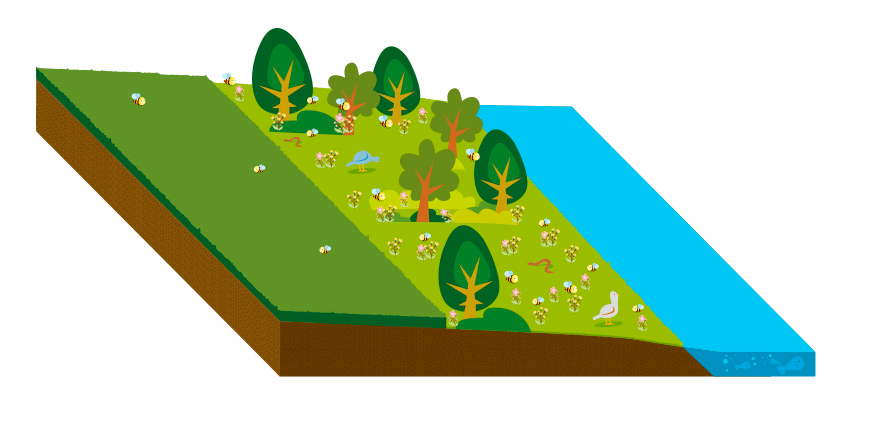Riparian buffer strips diminish pollution risk to water streams. Managed vegetative strips help prevent field run-off reaching water bodies by filtering potential pollutants, thereby protecting water quality and freshwater biodiversity.
- Management target
- Sustainability Indicators
DIRECT:
7.- Improvement of water quality
10.- Avoidance of contamination (local and diffuse)
14.- Slowing down of water flow
18.- Cutting off of pathways of concentrated run-off water allowing water permeability
19.- Protection of downstream areas by retaining and cleaning run-off water from sediments, nutrients, and PPP
INDIRECT:
1 Enhancement of Agro-biodiversity (enhance Habitats for birds; enhance soil fauna; increase fauna over the soil and edaphic fauna; enhance landscape diversity; provide ecosystem services such as pollination of crops, opportunities for recreation, …)
12.- Reduction of GHG levels
24.- Mitigation of water point pollution
8.- SI – Satisfaction Index
The implementation of this BMP could have a positive influence on the farmer’s perception.
18.- Biodiversity surface area
Buffers could be a refuge for some species in which survival can be difficult in arable lands.
19.- Ratio between natural vegetation surface and total surface of the farm
Buffers will increase this ratio by making larger the natural vegetation surface (if this kind of vegetation is the one used in the buffer).
21.- Biodiversity structure(nests, hives, spider webs, etc.)- habitats
As buffers act as refuges, there could be an increase of biodiversity structures.
23.- NO3 level – rivers
Buffers will function as filters and could minimise the value for this indicator.
24.- Use of PPPs in some farms close to water streams
By the placing of riparian buffers in the margins of the field and in the surroundings of water streams the possible contamination of the use of PPPs will be diminished in the water stream.
25.- GHG level
Plants acting as buffers are a sink for GHG.
